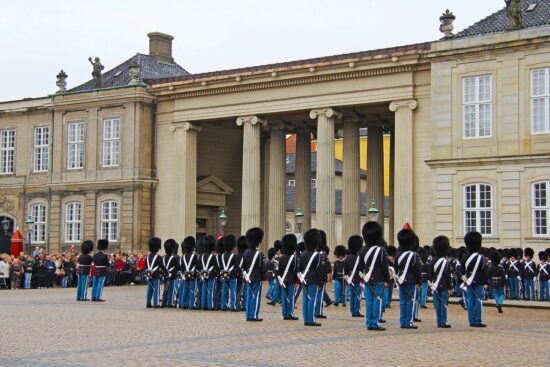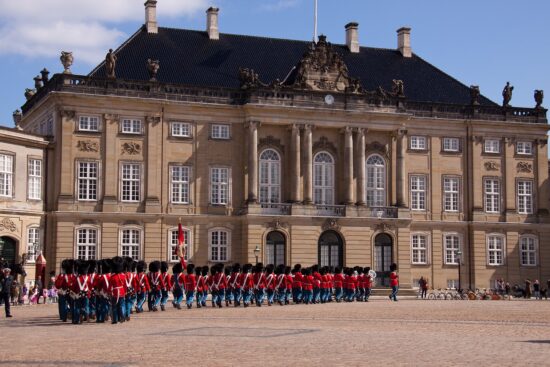Amalienborg
The four-winged royal winter palace complex of Amalienborg, with its octagonal courtyard stands across Frederiks Church. The complex was constructed by Frederik V on the occasion of the 300th anniversary of the coronation of Christian I, the first King of the House of Oldenborg.
The site for the four palaces was given to four prominent noblemen, A.G. Moltke, Christian Frederik Levetzau, Joachim Brockdorf, and Severin Løvenskiold, who committed themselves to build identical palaces, designed by the court architect Nicolai Eigtved. Amalienborg became the royal residence after Christiansborg Palace burned down in the night between 26 and 27 February 1794. In the course of a few days, the King acquired both the Moltke and Schack Palaces.
Christian VII’s Palace previously belonged to the Lord High Steward AG Moltke. Today the palace is HM The Queen’s representative palace. Christian VII’s Palace, or Moltke’s Palace, was erected in the years 1750-54 for the Lord High Steward A. G. Moltke. When the Royal Family became homeless after the fire of Christiansborg in 1794, Christian VII bought the palace.
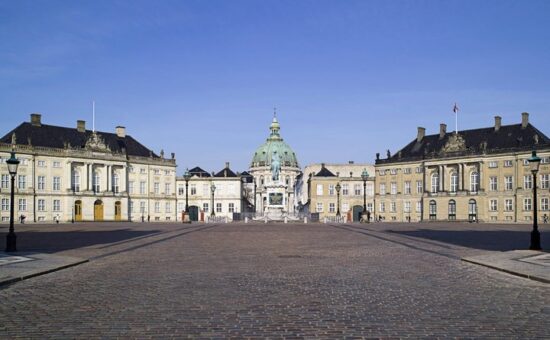

After Christian VII died in 1808, Frederik VI used the palace for his Royal Household. The Ministry of Foreign Affairs used parts of the palace in the years 1852-85. From 1885, the palace was used exclusively to accommodate guests and for ceremonial purposes. However, for short periods, the palace housed Crown Prince Frederik (IX) and Crown Princess Ingrid as well as Queen Margrethe and Prince Henrik during the restoration of their respective palaces.
From 1971-75, the palace also housed a small kindergarten for Crown Prince Frederik and Prince Joachim, and a classroom was set up there for them later on. In 1982, Agency for Palaces and Cultural Properties started an exterior restoration of the palace. From 1993-96, the agency carried out a general restoration of the interior with the support of several private sponsors.
Christian VIII’s Palace, or Levetzau’s Palace, was built in the period 1750-60 for Privy Councillor Christian Frederik Levetzau. Prince Frederik, the Heir Presumptive, bought the palace in 1794 and gave the painter and architect Nicolai Abildgaard responsibility for modernization in the new French Empire style. When the Heir Presumptive died in 1805, his son Prince Christian took over both the palace and the architecture. However, Abildgaard died in 1809, and modernization came to a halt.
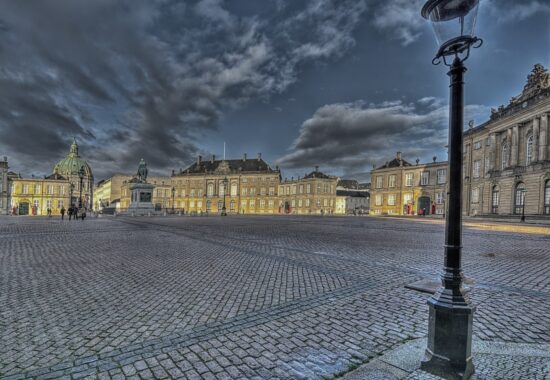
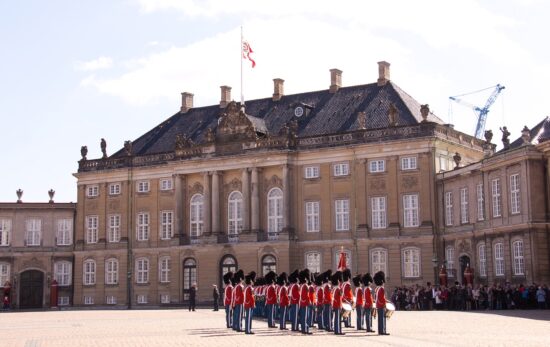
In 1839, Prince Christian became King under the name of Christian VIII, and the palace was subsequently called Christian VIII’s Palace. The King died in 1848 and the Queen Dowager, Caroline Amalie, in 1881. From 1885, the Ministry of Foreign Affairs used parts of the palace but had to move when it was made the residence of Crown Prince Christian (X) and Princess Alexandrine in 1898.
After the death of Christian X in 1947, the palace was placed at the disposal of the Heir Presumptive, Prince Knud. In the 1980s, the Agency for Palaces and Cultural Properties initiated a much-needed general restoration of the palace. It was fitted up to the house, among other things, the residence and reception rooms of the heir to the throne, stores for the Queen’s Reference Library, and a museum for the Royal House of Glücksborg, “The Royal Danish Collections, Amalienborg”. (Description / More)
